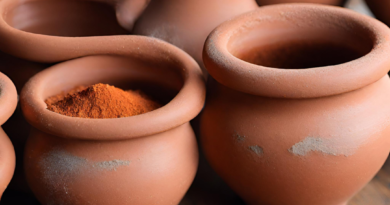How does clay affect the texture of roasted vegetables?
Clay cookware can have a unique impact on the texture of roasted vegetables, often enhancing their overall flavor and texture. Here’s how clay affects the texture of roasted vegetables:
1. Even Heating:
Clay pots distribute heat more evenly than some other materials, such as metal pans. This even heating helps vegetables roast uniformly, ensuring that they cook through at the same rate. As a result, you’re less likely to have some vegetables undercooked while others are overcooked.
2. Moisture Retention:
Clay cookware has a porous surface, which allows a small amount of moisture to escape while retaining more moisture than metal pans. This moisture retention helps vegetables stay tender and juicy as they roast, preventing them from drying out or becoming too crispy.
3. Flavor Infusion:
Clay pots can absorb some of the natural flavors released by the vegetables during roasting. As the clay heats up, it imparts a subtle earthy flavor to the vegetables, adding depth and complexity to their taste.
4. Crisp Outer Texture:
While clay pots retain moisture, they also allow for the development of a slightly crispy and caramelized outer layer on the vegetables. This contrast between the moist interior and the crisp exterior can enhance the overall texture of the dish.
5. Enhanced Aromatics:
Clay cookware can enhance the aromatic qualities of roasted vegetables. As the vegetables release their natural aromas during cooking, the clay pot’s porous surface helps trap and release these fragrances, creating a delightful sensory experience.
6. Natural Seasoning:
The minerals in clay can interact with the natural salts found in vegetables, enhancing their seasoning and taste. This can reduce the need for excessive added salt, making the dish healthier.
7. Visual Appeal:
Roasted vegetables cooked in clay pots often have a rustic and appealing appearance. The even browning and slightly caramelized exterior can make the vegetables look more inviting.
8. Retains Heat:
Clay pots retain heat well, which means that roasted vegetables can stay warm for longer after they are removed from the oven. This is especially useful when serving roasted vegetables as a side dish or part of a larger meal.
When roasting vegetables in clay cookware, it’s essential to preheat the pot gradually to prevent thermal shock. Start with a low oven temperature and increase it as needed. Additionally, be sure to season the vegetables with your choice of herbs, spices, and seasonings to complement the unique qualities of clay-roasted vegetables.



